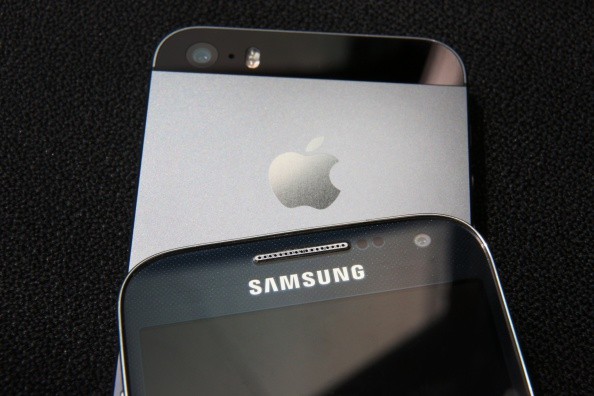The sales number of Apple Inc's iPhone has been witnessing a decline since the first quarter of the current year. Now, latest mobile market data shows that the iPhone flagship is gradually falling behind its arch rival, the Samsung's Galaxy flagship, in the United States.
That Samsung has over taken Apple in the United states is evident from the fact that while 16 percent of American consumers buying a Galaxy S7 or S7 Edge, 14.6 percent are buying an iPhone 6S or 6S Plus, consumer panel research firm Kantar Worldpanel reported. Though the fight is not fair, as Samsung's S7 and S7 Edge are newer handsets by half a year, but Apple has typically been winning over the Galaxy flagship, except in 2016.
Elaborating further, the data reveals that in the three months ending May 2016, Samsung and Apple have accounted for 37 percent and 29 percent of smartphone sales respectively in the U.S. On the other hand, sales of these tech giants' respective flagship models show a much closer competition, with the Galaxy S7/S7 Edge accounting for 16 percent of sales and the iPhone 6s/6s Plus at 14.6 percent.
A look at where these purchases are coming from offers a more interesting picture. Only 5 percent of Samsung purchases were made by people who switched from Apple, while 14 percent of Apple purchasers came from consumers who switched from Samsung.
Therefore, in the case of Apple as well as Samsung, most sales came from customers who repurchased and upgraded their devices of their preferred brand. The report further stated that people who plan to change devices within the next year, 88% of existing Apple users and 86% of existing Samsung users intend to remain loyal.
In the United Kingdom, the race between the two brands is even closer. Apple and Samsung together account for nearly three of every four phones sold in Great Britain, each with 36 percent of sales. The iPhone 6s and 5s were the two best-selling devices in the three months ending May 2016 in the U.K., followed by the Samsung Galaxy J5, and the iPhone SE.
The Galaxy S7 generation launched this year has been developed on the solid foundation of Samsung's preceding flagship, Galaxy S6 released last year. There is no doubt that the Galaxy S7 generations the best flagship that has arrived in the market seen since Apple's last update. Samsung has been consistent in upgrading the camera quality as well as user experience, The Verge reported.
Samsung made the Galaxy S7 available on March 11, while the other South Korean tech giant LG released its G5 handset a month later, and Taiwan's HTC launched the HTC 10 another month later. Meanwhile, Sony announced a new flagship-tier device in the Xperia X Performance in February, but the Japanese tech titan is yet to bring the handset out on the market. This is evident of the fact that competing with Apple or Samsung is still difficult.
However, people focusing only on Apple and Samsung are possibly missing the bigger picture. Huawei has already announced its plant to overtake Apple as the second-largest smartphone vendor by 2020.
On the other hand, there are rumors about Google entering the handset market on its own. Hence, Apple and Samsung should stop worrying too much about each other and take a look around them.
Watch a comparative review between Galaxy S7 and iPhone 6S below:



























